| HOME |
|---|
CORVUS
The Crow
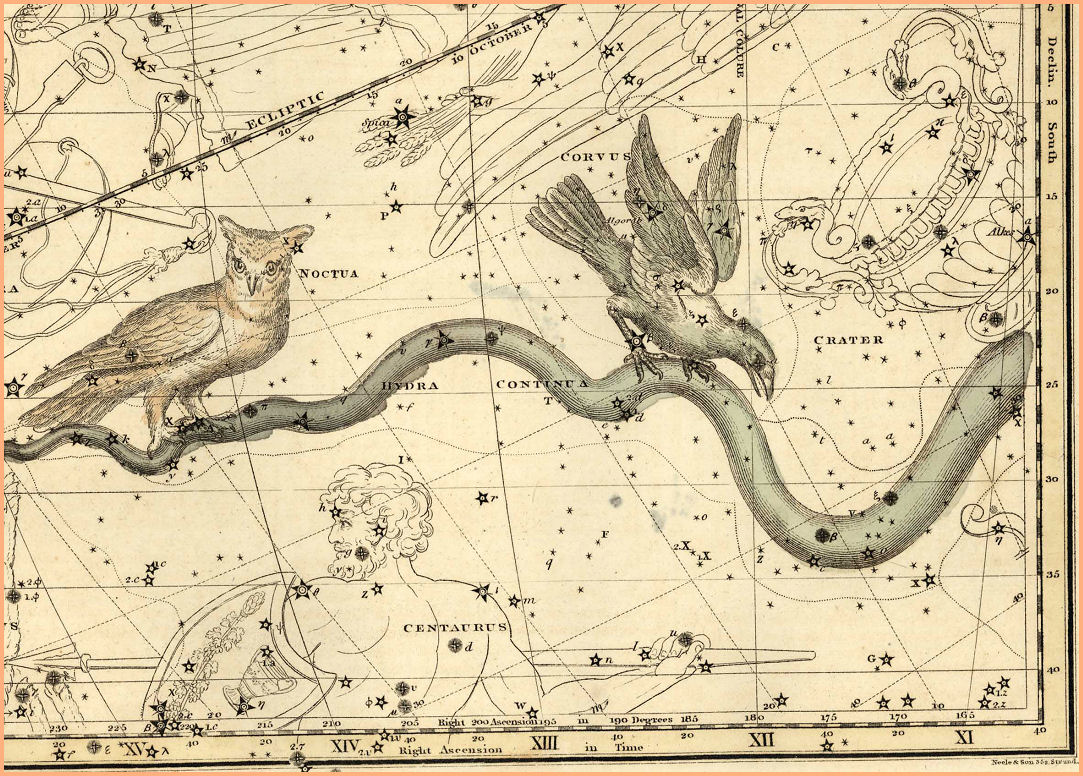
Corvus - Celestial Atlas by Alexander Jamieson - 1822
| HOME |
|---|

It is said that Corvus, the crow, used to have silvery white feathers, and a sweet, musical song. He was the favourite bird of Apollo, and one day Apollo gave the crow his goblet, and asked him to fetch some water. On his way to the stream, the crow saw a fig tree, and stopped to eat some figs. But the figs weren't quite ripe, so the crow waited for the figs to ripen, neglecting his instructions from Apollo. When he finally returned with the water, he made up a story about a fearsome snake that wouldn't let him near the water for a long time. Apollo, being a god, saw through the lie at once, and punished the crow by turning it black, taking away its sweet voice, and putting it into the heavens, on the back of the most fearsome snake of all, Hydra, the many headed water snake, who had battled the mighty Hercules. Apollo also put his goblet (now known as the constellation Crater,) on the back of the snake just out of the crow's reach, to forever remind him why he was being punished. Now for all eternity, the crow rides the back of the giant snake, his long pointed bill perpetually stabbing at the snake, in a futile effort to escape his fate.
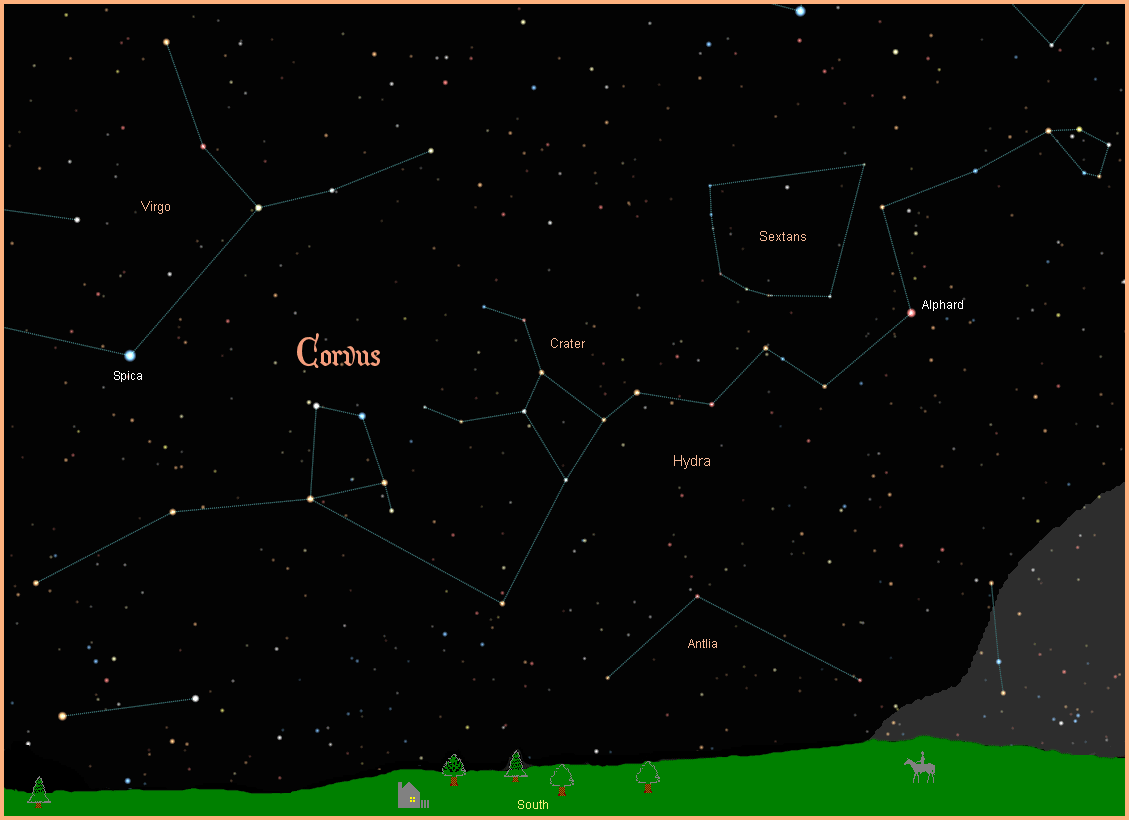
Corvus may be a small constellation, but the five stars that compose the figure of the crow (sometimes referred to as "the sail") are quite bright, and have all possessed names since ancient times. Alchiba is designated as the alpha star in the constellation, although with a magnitude of only 4.02, it is actually the faintest of the five stars that outline the crow, which suggests that in ancient times it might have been much brighter. According to R.H. Allen the star's name comes from the Arabic title for a much larger asterism that once included the crow. In classical illustrations it represents the beak of the crow. The star is an F1V yellow/white main sequence star, only about 48 light years away.
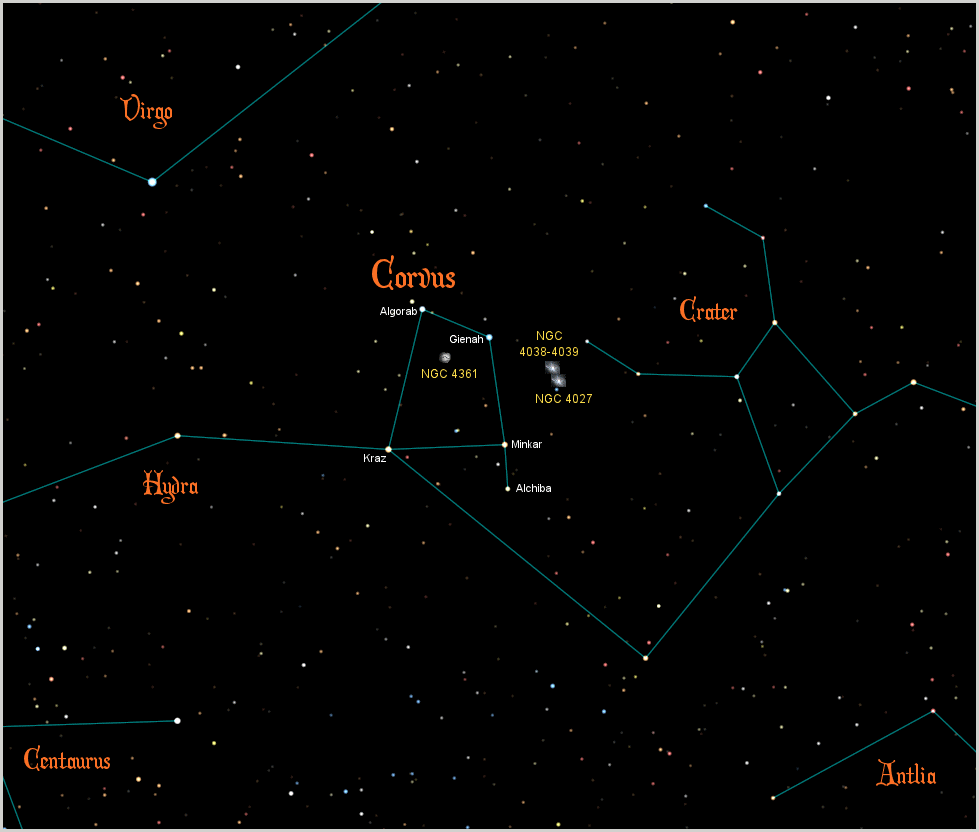
Beta Corvi is named Kraz in Becvar. Its name is taken from the Latin "cras", meaning tomorrow, (which gave rise to the word procrastinate). To Latin speakers the calls of crows and ravens sounded like "cras, cras," tomorrow, tomorrow, except of course for Poe's ominous bird with his tragic nevermore. Since Apollo's fabled Corvus could be thought of as the original procrastinator, for which he paid dearly, the label certainly fits. The full name of the star, Kraz in Becvar, honours the famous Czech astronomer, Antonín Becvár (1901-1965), who was known for his state-of-the-art star charts, and had both a comet and a crater on the Moon named after him. The star is a G5III yellow giant, 140 light years away, with a magnitude of 2.65, making it the second brightest star in the constellation.
The brightest star in Corvus is Gamma Corvi, with a magnitude of 2.58. It is named Gienah Ghurab, from the Arabic for wing of the crow. It is a B7IV blue subgiant, about 165 light years away.
Delta Corvi is Algorab, from the Arabic "Al Ghuraab", which simply means the crow. It is an A0V white main sequence star, about 87 light years from Earth, with a magnitude of 2.95.
Epsilon Corvi is Minkar, Arabic for nostril. It is a K2III orange giant, magnitude 3.0, about 303 light years away.
So far two gas giant planets have been found in Corvus. The stars they orbit are very far away and well beyond naked eye visibility. For more information on these and other extrasolar planets, visit NASA's New Worlds Atlas, and The Open Exoplanets Catalogue.
In the middle of the constellation is the bright planetary nebula NGC 4361, a bubble of gas thrown off by a dying star. It is a faint object, with a magnitude of only 10.9, and is 3,900 light years from Earth.
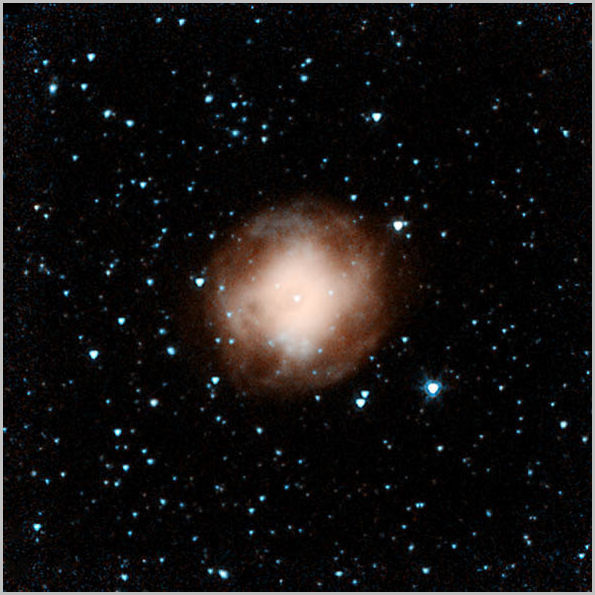
Very much farther away at a distance of 63 million light years is a spectacular pair of galaxies NGC 4038 and NGC 4039, whose mutual gravitational attraction has pulled them together in a wild, passionate dance that's been going on for 100 million years, as they slowly merge, and become one. They are known as the Antennae Galaxies, or the Ring Tail Galaxies, with a magnitude of 10.3.
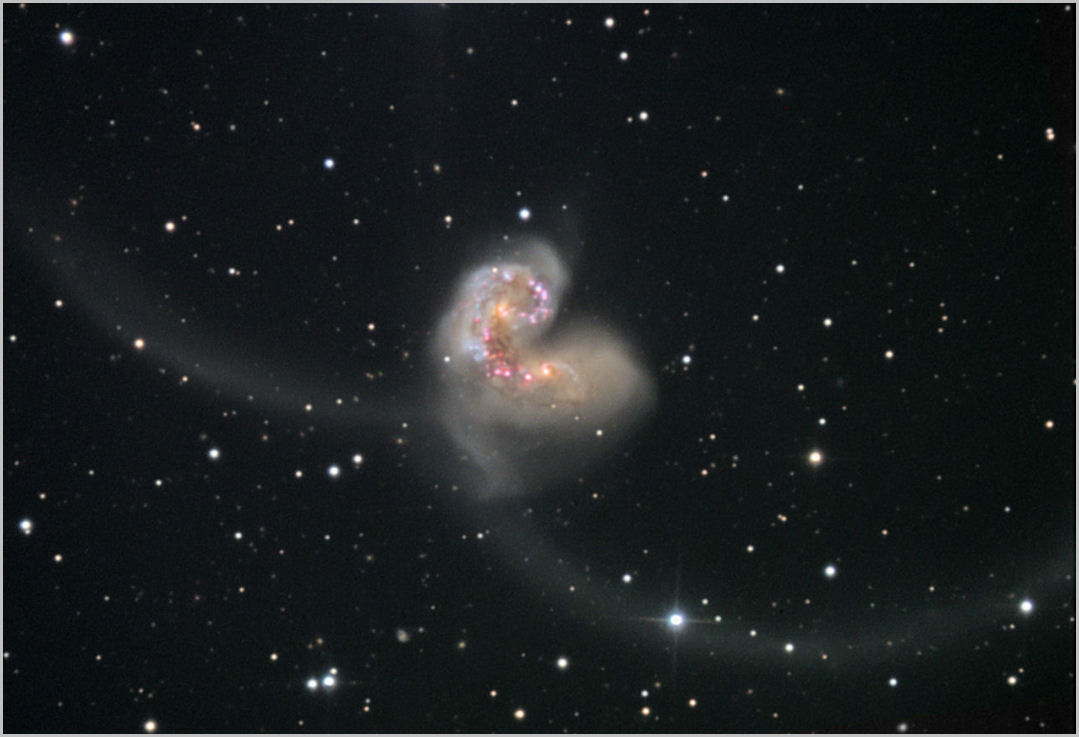
A closer look by the Hubble Space Telescope reveals the colourful chaos and violence of hundreds of billions of stars crashing into each other.
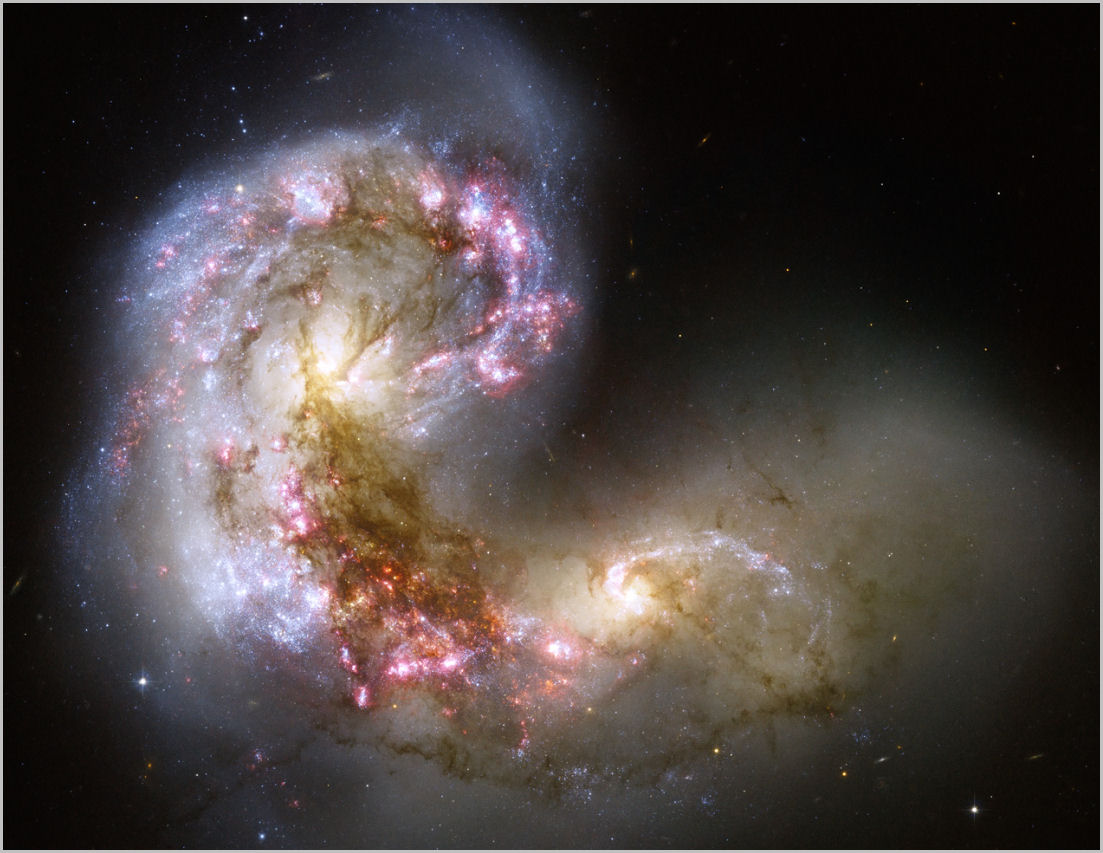
Just under the Antennae galaxies is NGC 4027 (Arp22), an unusual spiral galaxy with only one long spiral arm. It has an apparent magnitude of 11.1, and is about 75 million light years away.
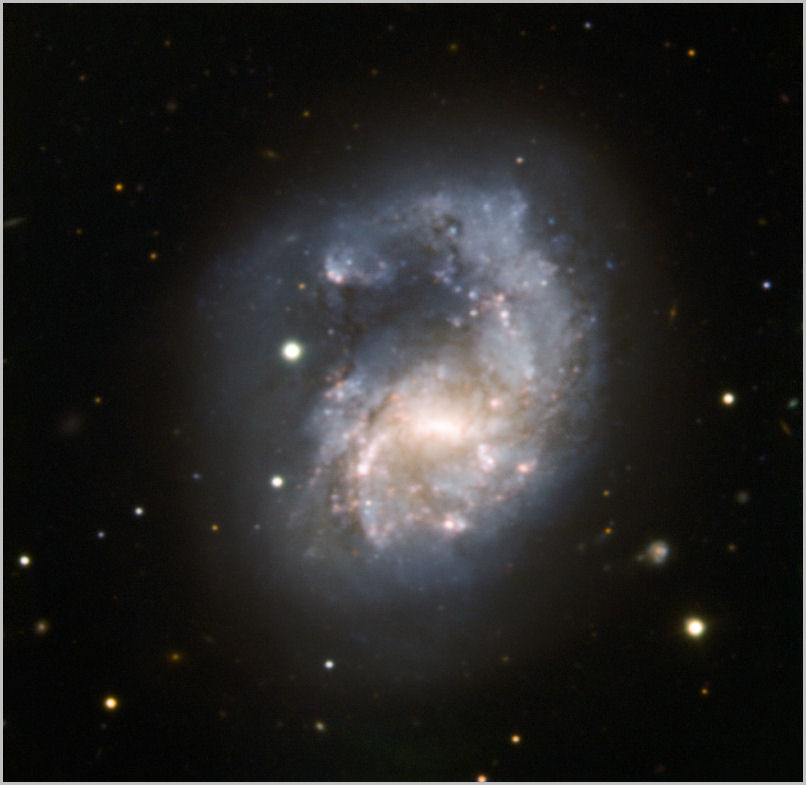
|
|
|
|
|
|